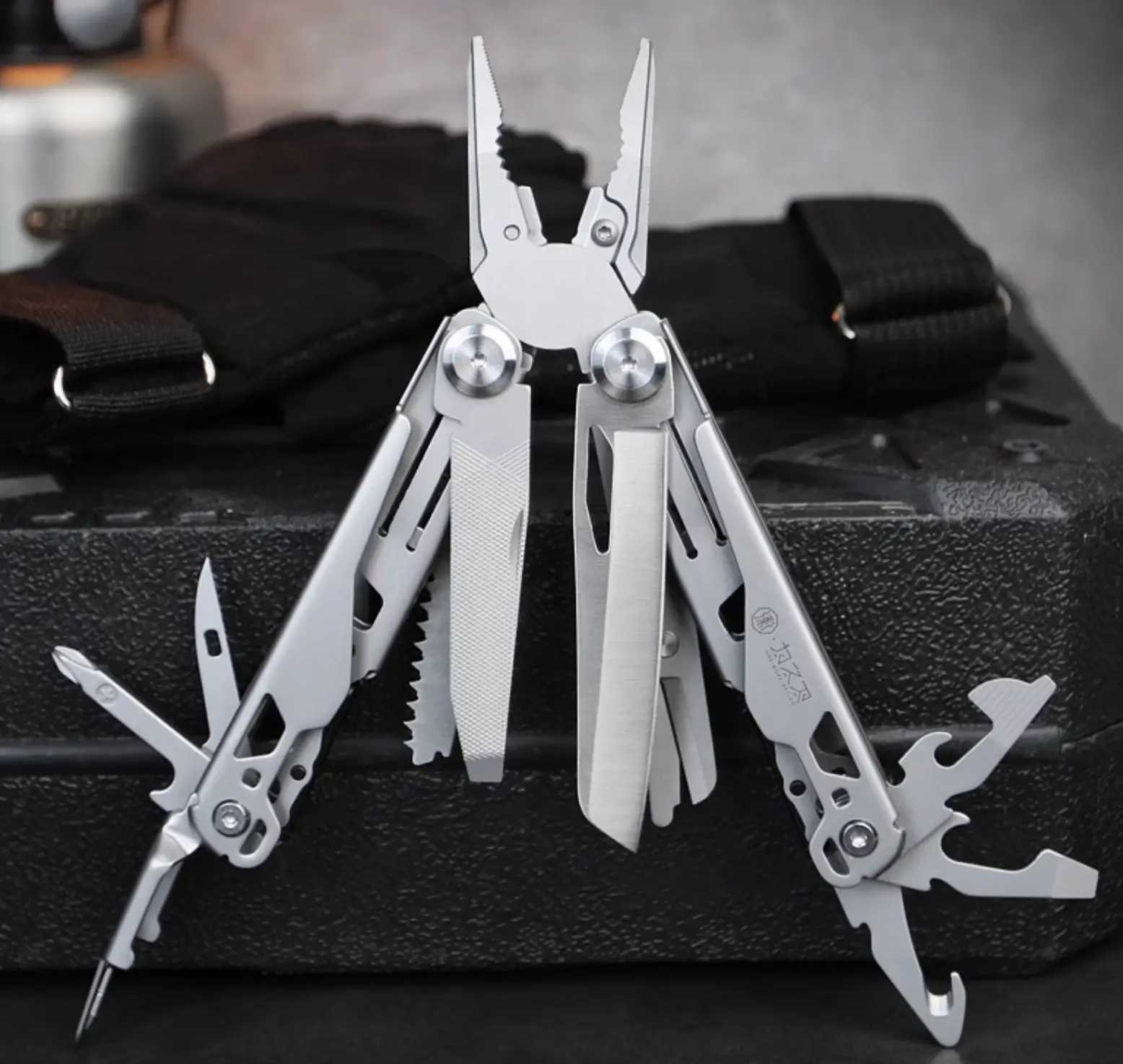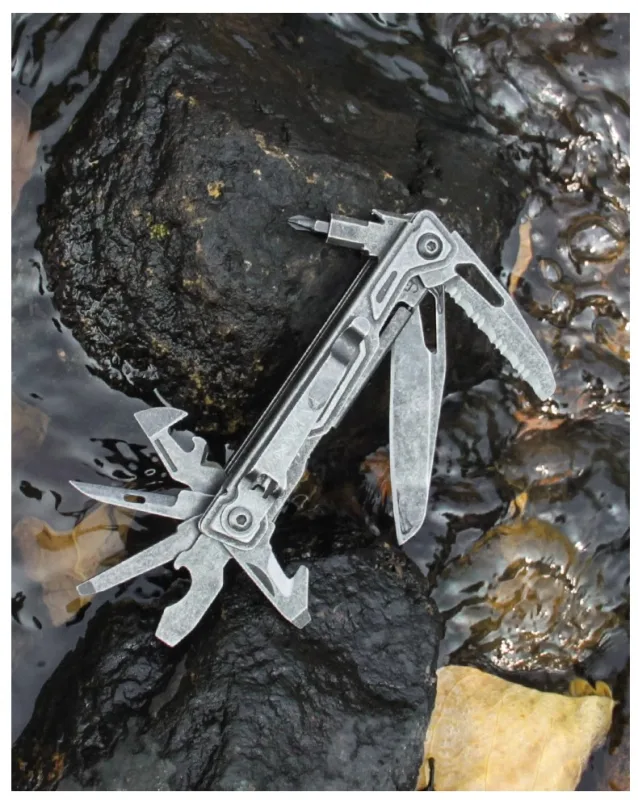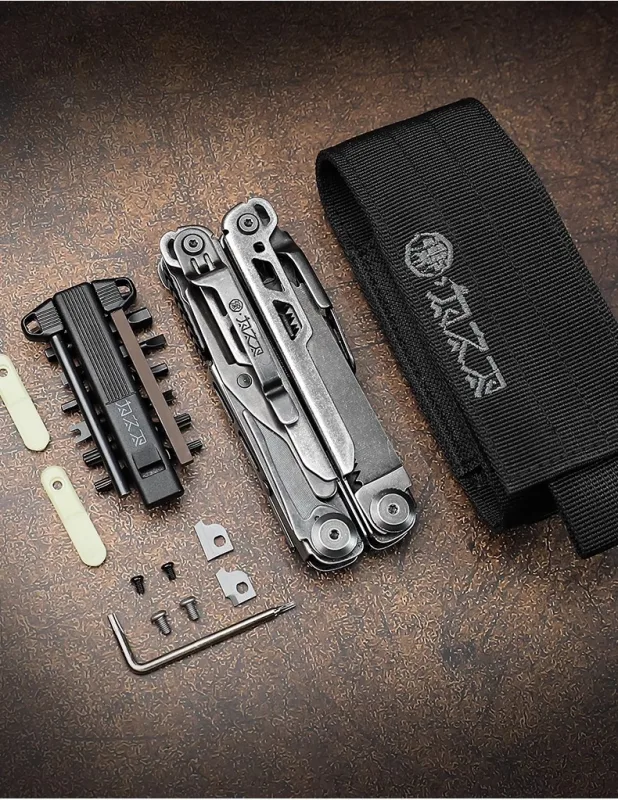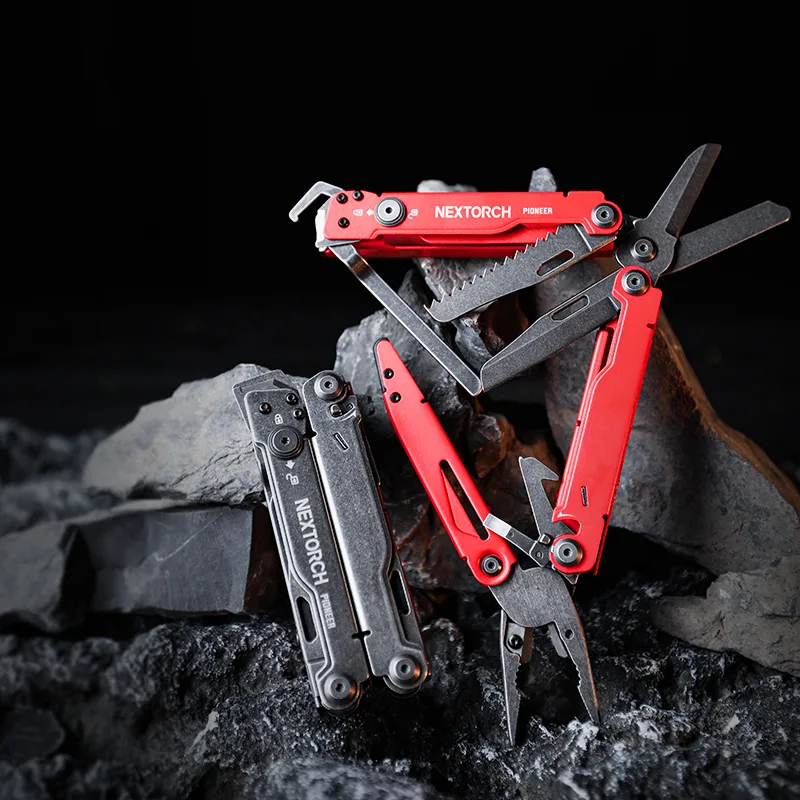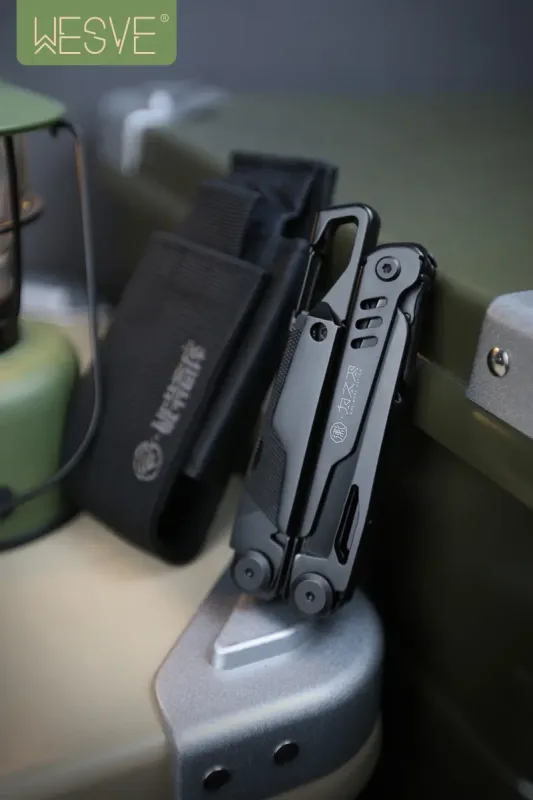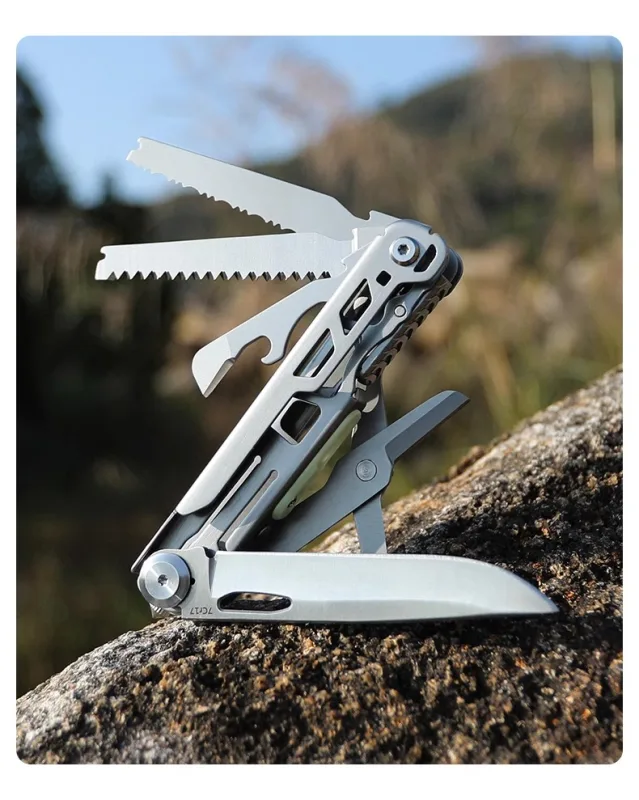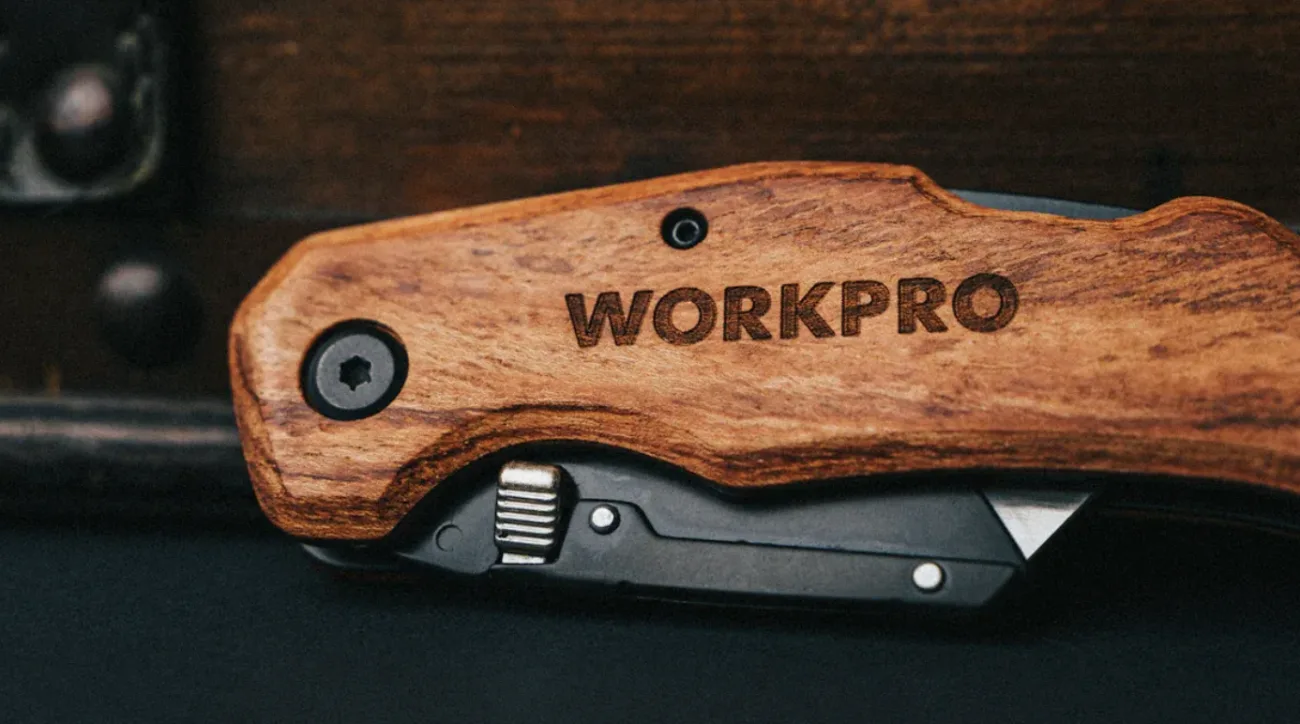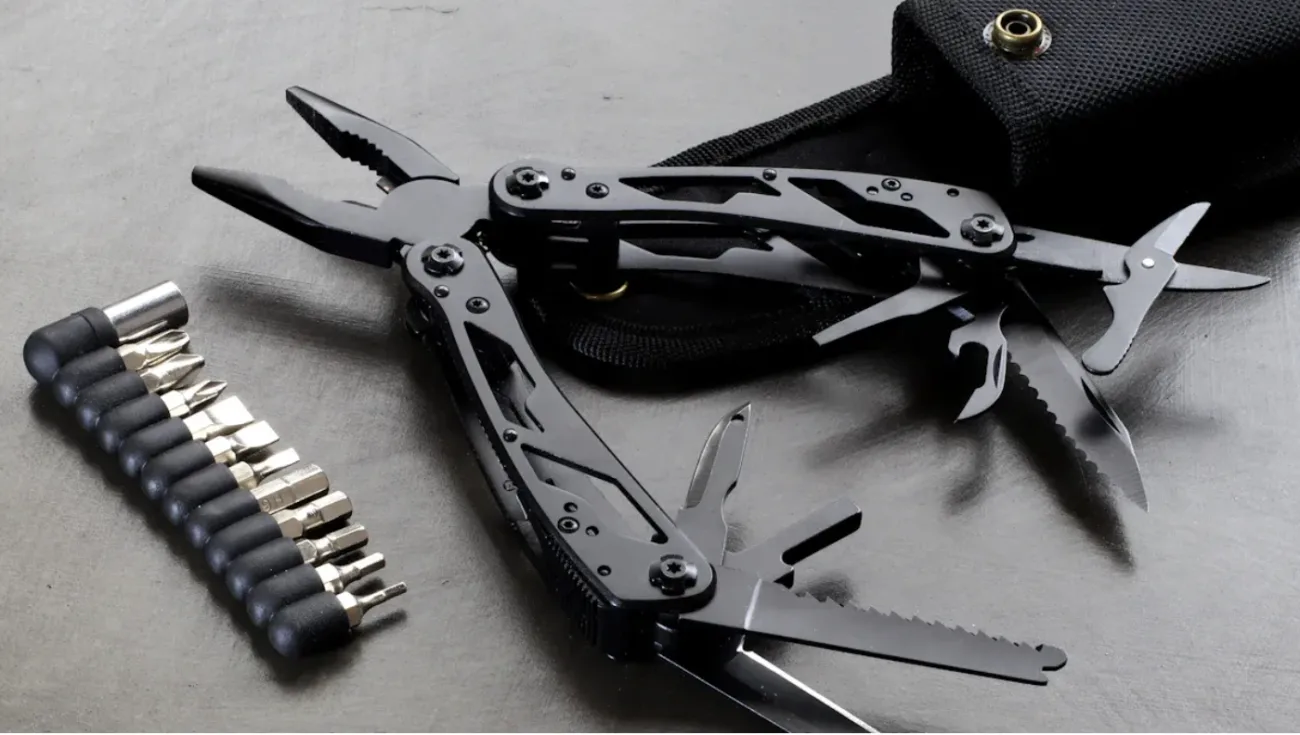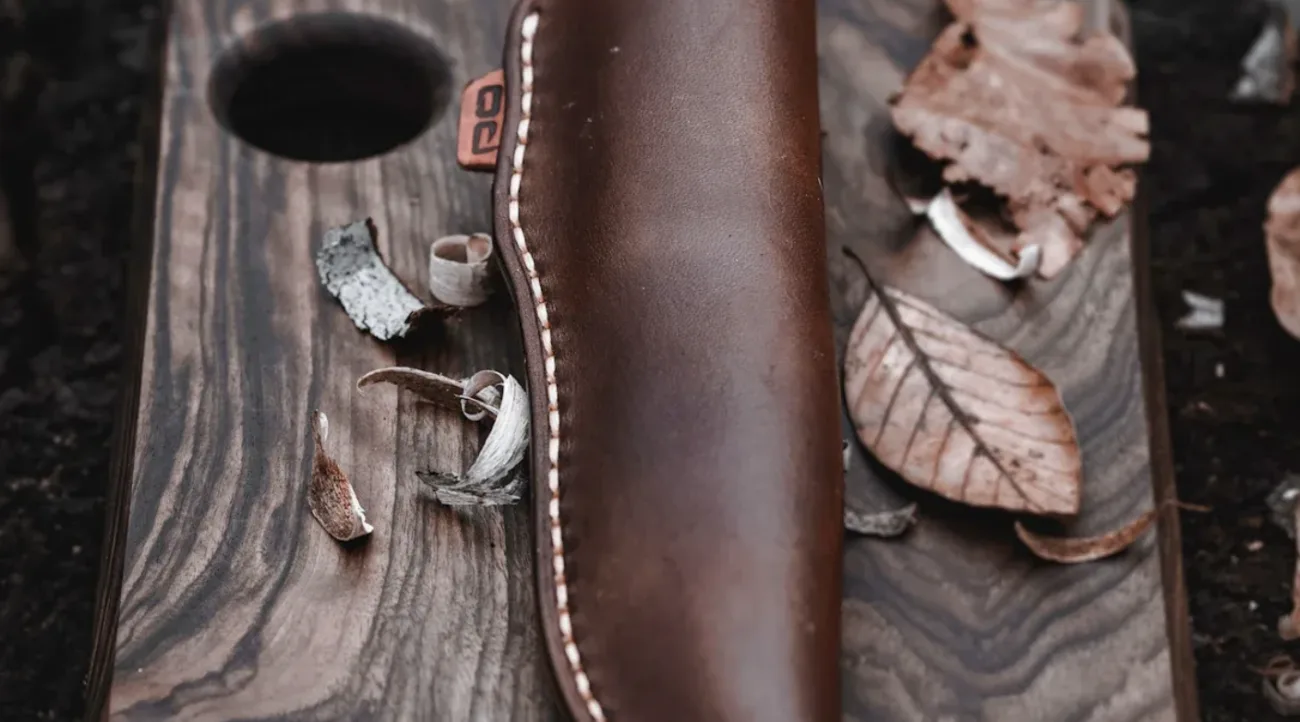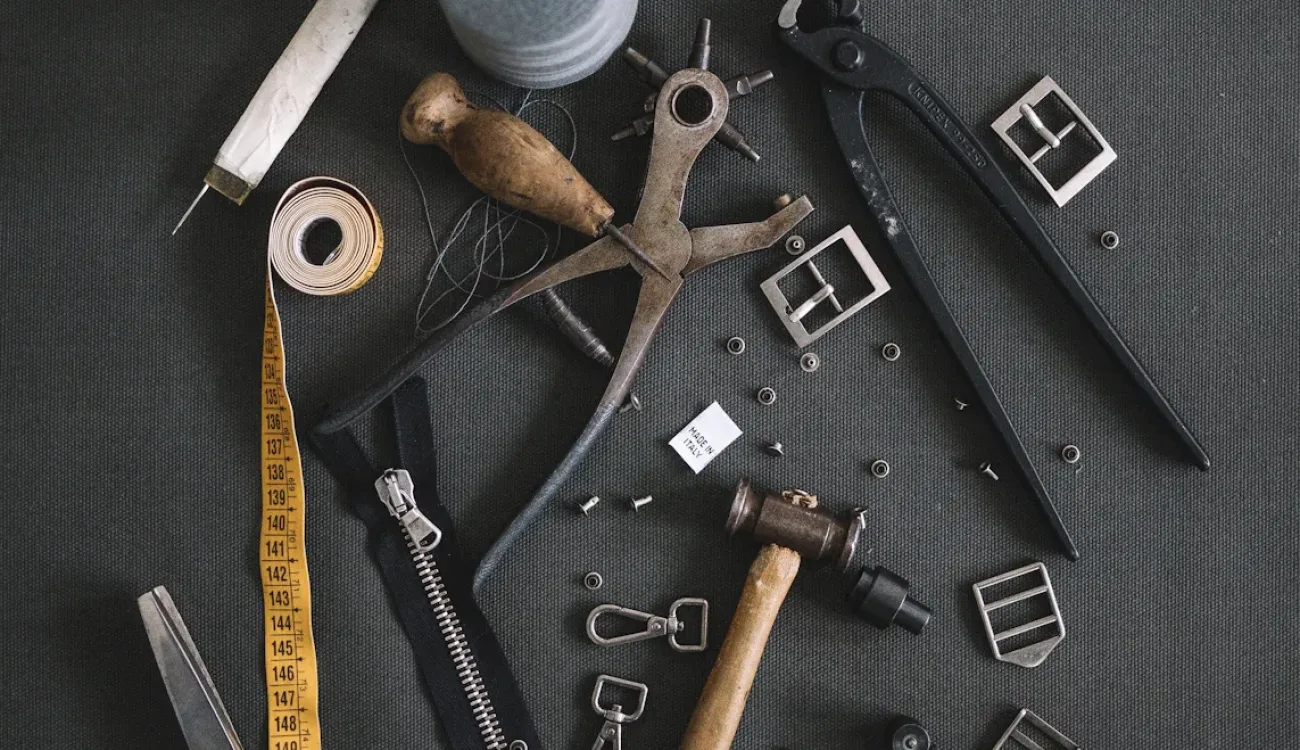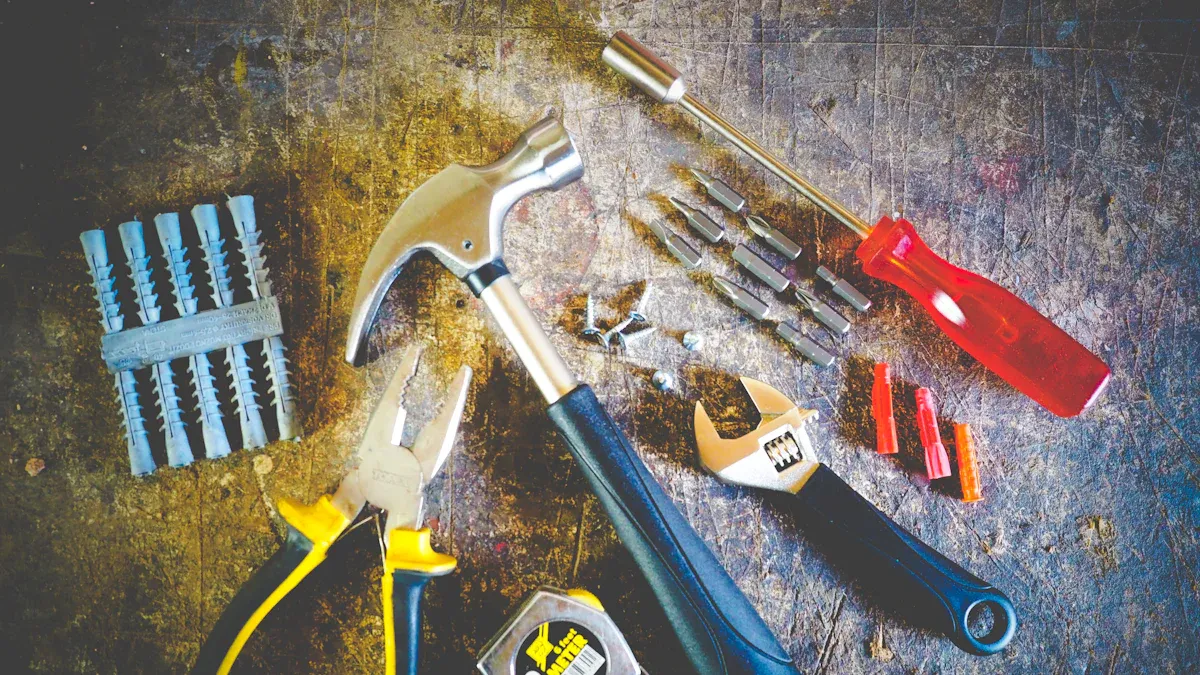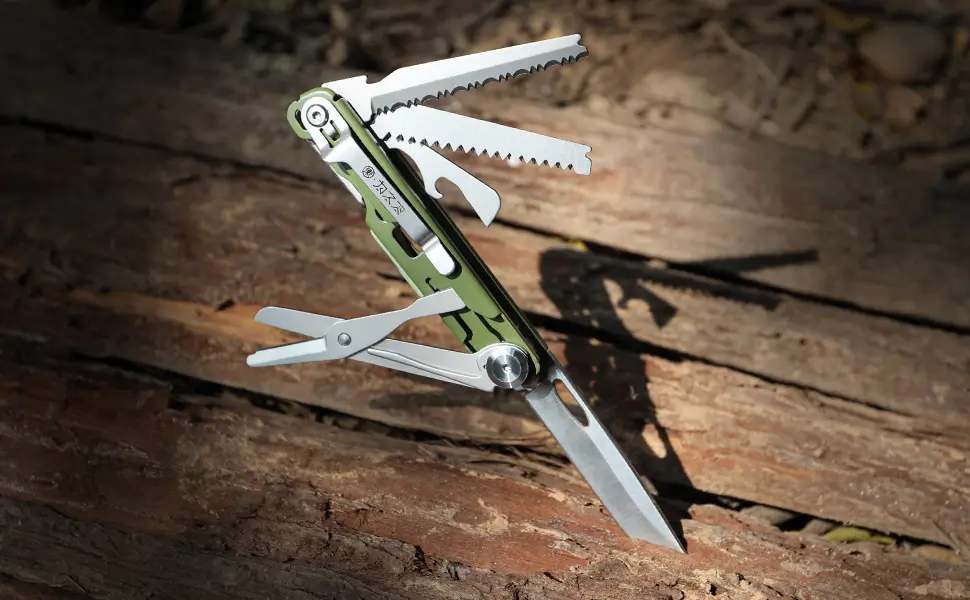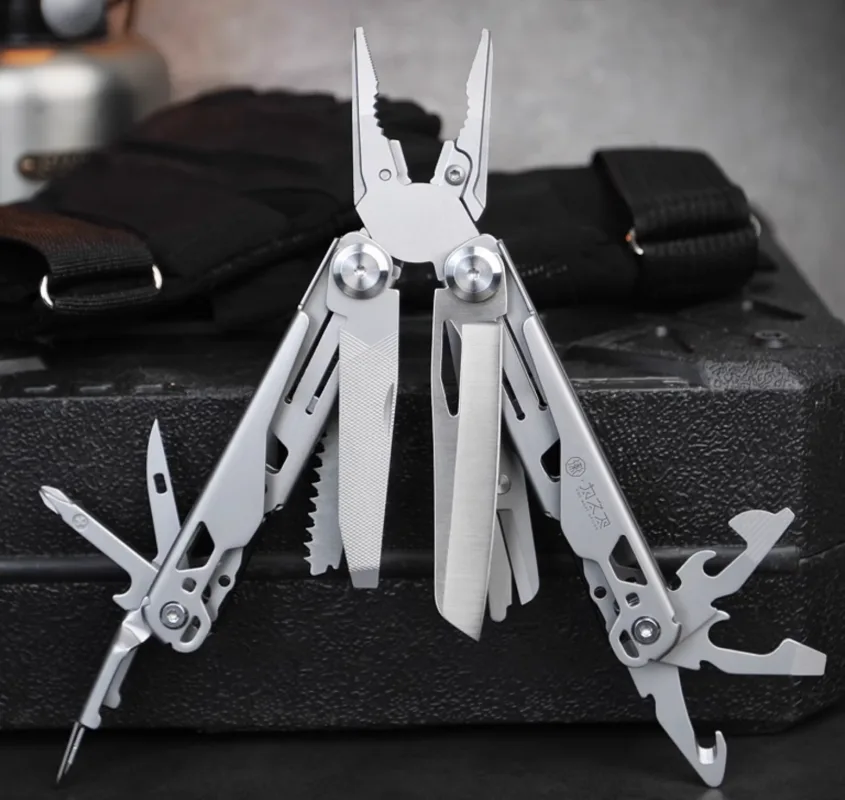
Multitool Basics A multitool is a small toolbox you can carry easily. It has many tools like pliers, screwdrivers, and knives in one. Think of it as having all you need for quick fixes or outdoor fun in one gadget!
Why is a multitool so useful? It can do many things. You can open bottles, tighten screws, or cut ropes with it. For beginners, it’s great because it’s easy to use, helpful, and keeps you from carrying heavy tools.
Multitool Basics Key Takeaways
- A multitool has many tools in one small gadget. It’s great for quick repairs and outdoor fun.
- Pick a multitool that fits your needs, like camping or chores. Make sure it has the tools you’ll use.
- Clean and oil your multitool often. This keeps it working well and lasting longer.
- Be careful when using a multitool. Follow safety rules to avoid getting hurt.
- Buy a good multitool from a trusted brand. This makes sure it works well and lasts a long time.
What is a Multitool?
Definition
A multitool is like a Swiss Army knife but with more tools. It’s a small gadget that combines many functions in one. This makes it great for quick repairs, outdoor trips, or daily chores. Tools like pliers, screwdrivers, scissors, and bottle openers are often included. It saves time and space by giving you everything in one compact device.
Think of it as your problem-solving tool for any situation. You can tighten screws, cut ropes, or open cans with ease. Its flexibility makes it a favorite for both beginners and experts.
Common Features
Most multitools have key features that make them very helpful. Here are some common ones:
- Pliers: These are the main tool in most multitools. They help grip, bend, or cut wires.
- Knife Blade: A sharp blade is useful for cutting things like packaging or food.
- Screwdrivers: Flathead and Phillips screwdrivers are included for simple repairs.
- Scissors: These are great for cutting paper, fabric, or fishing lines.
- Bottle and Can Openers: These tools make opening cans and bottles super easy.
Some multitools also have extras like saws, wire strippers, or small rulers. The tools you get depend on the model you pick.
Tip: Choose a multitool with tools you’ll use the most. For example, if you camp often, pick one with a saw or fire starter.
To compare multitools to other tools, think about what you need. Just like food labels such as “USDA Organic” guide buyers, multitool features should match your tasks. A multitool with strong pliers and a sturdy knife will meet most needs, just like trusted food labels meet expectations.
Types of Multitools
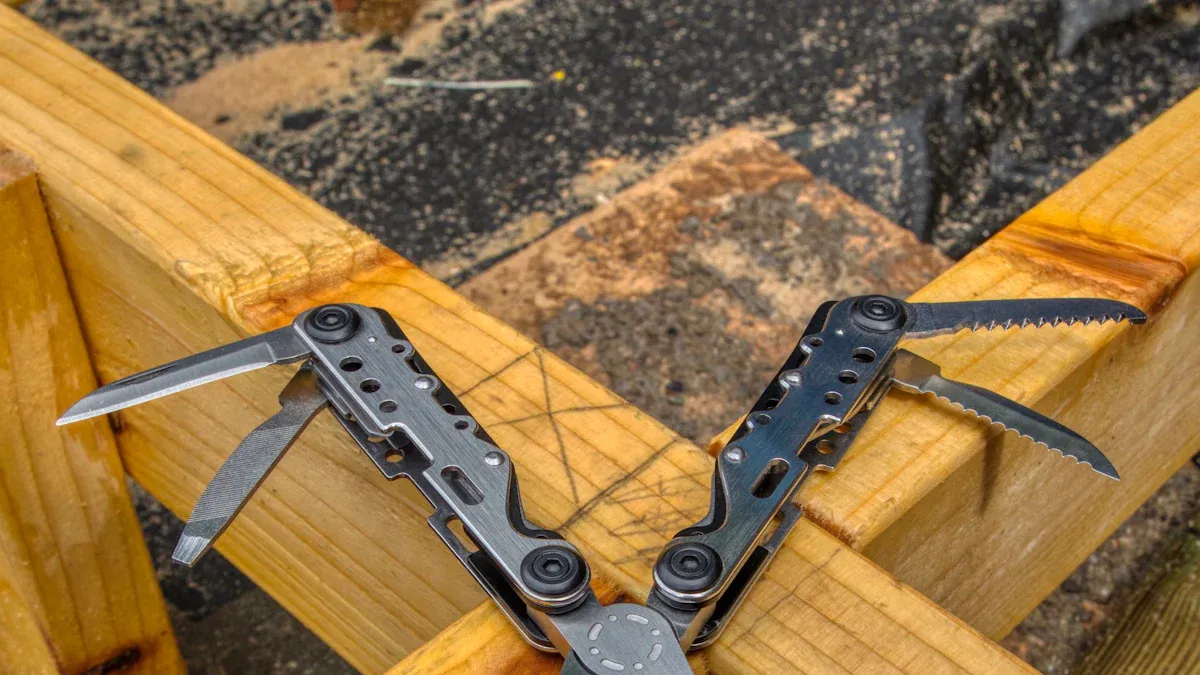
Pocket Multitools
Pocket multitools are small, light, and easy to carry. They work well for simple tasks like opening boxes or tightening screws. You can keep one in your pocket or on a keychain. This makes them very handy to have around.
Here’s a quick look at some popular pocket multitools:
| Multitool Name | Pros | Cons |
|---|---|---|
| Mini Multitools | Useful for many tasks, small, and easy to carry. | Might not meet everyone’s specific needs. |
| Gerber Gear Shard 7-in-1 keychain | Very light, strong steel, and safe for air travel. | Open tools might catch on fabric, not the most useful. |
| Wallet Ninja multitool card | Fits in wallets, has many tools, and is airline-safe. | No knives or grooming tools, may need extra tools for some jobs. |
| Victorinox Rambler Swiss Army Knife | Has many high-quality tools and a smart design. | Tools can be hard to pull out quickly when needed. |
If you want something small and useful, pocket multitools are great. They’re perfect for quick fixes and small jobs.
Full-Size Multitools
Full-size multitools are bigger and stronger. They are made for tough jobs like cutting thick wires or fixing machines. These tools are great for outdoor trips, DIY projects, or work tasks.
When picking a full-size multitool, think about these things:
- Design: Choose tools that are simple and safe to use.
- Performance: See how well it cuts, grips, or saws.
- Ease of Use: Make sure it’s easy to handle and doesn’t need much effort.
- Durability: Pick one that lasts long and handles rough use. Test it by dropping or inspecting it.
- Value: Compare its features, quality, and price to find the best deal.
Full-size multitools are heavier but very reliable. If you need a tool for tough jobs, this is the one to pick.
Specialized Multitools
Specialized multitools are made for certain hobbies or jobs. For example, some are for electricians, campers, or mechanics. These tools often have special features like fire starters or wire cutters.
Here’s a tip: Get a specialized multitool if you have a specific need. For camping, choose one with a saw and fire starter. For fishing, pick one with scissors and a hook remover.
Specialized multitools aren’t as flexible as pocket or full-size ones. But they are great for their specific purpose. They’re ideal for people with unique tasks or hobbies.
Choosing the Right Multitool
Think About Your Needs
Before buying a multitool, decide how you’ll use it. Will you fix things at home, go camping, or do small daily tasks? Knowing this helps you pick the right tool. For example, if you love outdoor trips, choose one with a saw and fire starter. If you need it for everyday tasks, a pocket multitool with scissors and a bottle opener might be enough.
Surveys help companies learn what people want in a multitool. Here’s how they work and why they matter:
| Aspect | What It Means |
|---|---|
| Purpose | Quickly gather opinions from many people at low cost. |
| Benefits | Show trends, confirm ideas, and highlight what users like most. |
| Applications | Help find what users need, improve features, and group similar users. |
By knowing your needs, you won’t waste money on tools you don’t use.
Tip: Write down tasks you do often. Match those tasks to the tools in the multitool you’re thinking about buying.
Check Material and Quality
The material and quality of a multitool affect how long it lasts. Stainless steel is common because it doesn’t rust and stays strong. Some have titanium parts, which are light but tough.
When checking quality, look for smooth edges and tight hinges. Avoid tools that feel loose or weak. A good multitool should feel sturdy and work smoothly.
Note: A high-quality multitool costs more but lasts longer. It’s worth the extra money.
Balance Brand and Budget
Choosing between a good brand and your budget can be hard. Brands like Leatherman and Gerber are reliable and offer repairs. Cheaper tools may break easily or be unsafe.
Here’s how market research can help you decide:
- Brand mentions online show how popular a brand is.
- Reviews tell you what people think about the brand.
- User data shows risks, like common complaints about a product.
Studies show spending more on a trusted brand is better. Cheap tools often disappoint, while good brands work well and last longer.
Tip: If money is tight, look for sales on trusted brands. You can get a great multitool without spending too much.
Using a Multitool Safely
Basic Usage Tips
To use a multitool well, learn what each tool does. Every tool has a job, so take time to understand them. For example, know which blade cuts and how to open pliers safely.
Here are some simple tips for using your multitool:
- Start cutting slowly. Push a blade corner into the material first.
- Turn the tool so the blade follows your cutting line.
- Hold the tool firmly and press evenly as you cut.
- Use a ruler or guide for straighter cuts.
- Keep the tool steady to avoid mistakes.
When picking a multitool, think about weight, size, and ease of use. A light tool under 10 ounces is great for daily use. Smaller tools are easier to hold but may have fewer features. Choose one with a good locking system for safety.
Tip: Practice on easy tasks first. This helps you get better and avoid errors.
Safety Precautions
Safety is very important when using a multitool. Using it wrong can cause injuries. In Canada, many workplace accidents happen because tools are misused. This shows why safe use matters.
Follow these safety rules to stay safe:
- Keep fingers away from moving parts.
- Make sure the tool locks before pressing hard.
- Don’t use too much force, or the tool might slip.
- Store your multitool in a pouch to avoid cuts.
- Check your tool often for damage. Replace it if it’s broken.
By being careful, you can use your multitool safely and enjoy its benefits. A little care can prevent big problems!
Maintaining Your Multitool
Taking care of your multitool ensures it stays reliable and lasts longer. Regular maintenance keeps it in top shape, so it’s ready whenever you need it. Let’s dive into the basics of cleaning, lubrication, and proper storage.
Cleaning
Keeping your multitool clean is essential for its performance. Dirt, grease, and debris can build up over time, making it harder to use. Regular cleaning prevents this and helps your tool work smoothly.
Here’s how you can clean your multitool effectively:
- Wipe it down after every use to remove dirt and dust.
- Use a soft brush or cloth to clean hard-to-reach areas.
- Avoid using alcohol on aluminum parts, as it can cause damage. Instead, use distilled water for materials like brass.
- If your multitool has stubborn grime, soak it in warm soapy water for a few minutes, then scrub gently.
Spot cleaning is also important. It stops dirt from accumulating and keeps your multitool looking sharp. A clean tool not only works better but also lasts longer.
Tip: Create a cleaning schedule based on how often you use your multitool. For heavy use, clean it weekly. For occasional use, a monthly cleaning should suffice.
Lubrication
Lubrication keeps your multitool’s moving parts working smoothly. Without it, hinges and joints can become stiff or even rust.
Follow these steps to lubricate your multitool:
- Apply a small drop of oil to each hinge and joint.
- Open and close the tools a few times to spread the oil evenly.
- Wipe off any excess oil with a clean cloth to prevent it from attracting dirt.
Experts recommend using high-quality lubricants designed for tools. These products reduce wear and tear, ensuring your multitool stays in great condition.
Note: If you’re unsure about how much oil to use, start small. You can always add more if needed.
Proper Storage
Storing your multitool correctly protects it from damage. A poorly stored tool can rust, dull, or even break.
Here are some storage tips to keep your multitool safe:
- Store it in a dry place to prevent rust.
- Use a protective pouch or case to avoid scratches and dents.
- Keep it away from extreme temperatures, which can weaken the materials.
- Organize your tools so they’re easy to find and less likely to get damaged.
By following these steps, you’ll extend the life of your multitool and keep it ready for action.
Reminder: Always check your multitool before storing it. Make sure it’s clean and dry to avoid long-term damage.
A multitool is a handy gadget with many uses. It’s great for daily tasks like opening boxes or fixing things quickly. Beginners can use it to do many jobs without needing a big toolbox. Many multitools are affordable and have useful features, making them perfect for first-time users.
Choose a simple multitool that matches what you need. Once you’re used to it, try advanced ones for hobbies or harder tasks. The right multitool helps you stay prepared for anything.
Tip: Try out different tools to find your favorite one!
FAQ
What’s the best multitool for beginners?
Start with a pocket multitool. It’s lightweight, easy to carry, and has basic tools like a knife, screwdriver, and scissors. Look for trusted brands like Leatherman or Victorinox.
Tip: Choose one with tools you’ll actually use, like a bottle opener or pliers.
Can I take a multitool on a plane?
Most multitools with blades aren’t allowed in carry-on luggage. However, TSA-approved multitools without knives, like the Gerber Shard or Wallet Ninja, are safe for air travel.
Reminder: Always check TSA guidelines before packing your multitool.
How do I sharpen the knife on my multitool?
Use a small sharpening stone or a dedicated knife sharpener. Hold the blade at a 20-degree angle and slide it across the stone evenly. Repeat on both sides until sharp.
Note: Be careful while sharpening to avoid injuries.
How often should I clean my multitool?
Clean it after heavy use or at least once a month. Regular cleaning prevents dirt buildup and keeps the tools working smoothly.
Tip: Wipe it down after every use to make deep cleaning easier later.
What should I do if my multitool rusts?
Remove rust with a soft brush and a rust remover or vinegar. Rinse thoroughly and dry it completely. Apply a light coat of oil to protect it from future rust.
Pro Tip: Store your multitool in a dry place to prevent rust in the first place.


